Phyllanthus angustifolius
Phyllanthus angustifolius
(Sw.) Sw., Fl. Ind. Occid. 2: 1111. 1800; Fl. North Amer. @ eFloras.org vol. 12; Diasperus angustifolius (Sw.) Kuntze, Revis. Gen. Pl. 2: 598. 1891.
Shrubs, monoecious, up to 3 m tall, branching phyllanthoid. Main stems terete, not winged, glabrous; ultimate branches deciduous, flat cladodes, up to 1 cm wide, not winged, glabrous. Leaves on main stems spiral, scale-like, deciduous; stipules dark brown. Leaves on ultimate branches distichous, scale-like, caducous; stipules absent. Inflorescence cymules, bisexual or male, with 1-2 female and/ or 2-5 male flowers. Male Flowers: Pedicels 1-6 mm. Sepals 6, biseriate, free, purplish pink to cream, ovate to suborbiculate, flat, apex acute or rounded. Disc glands 6, free, greenish yellow. Stamens 3, filaments connate forming a thick column, anthers bithecous. Pistillode absent. Female Flowers: Pedicels 2-7 mm long, erect or spreading in fruit. Sepals +/- similar as in male flowers. Disc annular, undulate or crenulate. Ovary smooth, 3-locular, 3-lobulate; styles 3, connate at base, branched, spreading.
Fruit a capsule, 3-4 mm in diameter, 3-lobed. Seeds uniformly brown, 1.4-2.5 mm, irregularly verrucose. (Capsules not observed)
Common Names: Foliage Flower, Sword Bush, Swordbush Foliage Flower
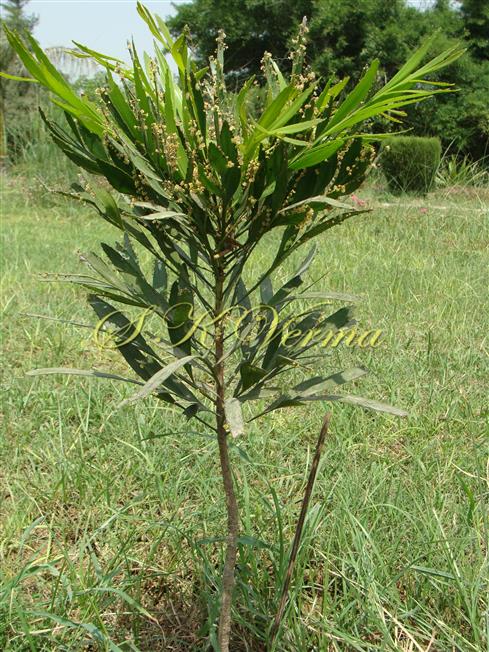
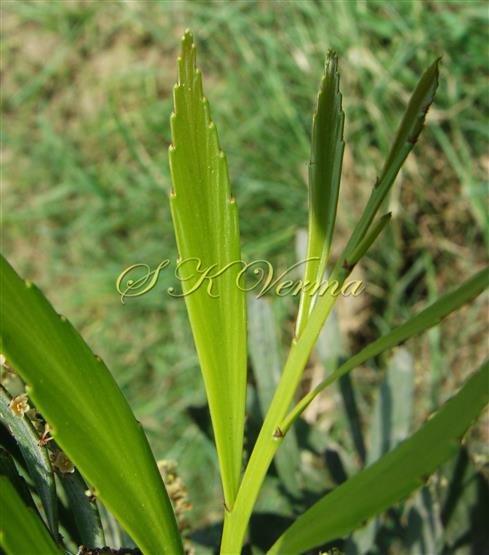
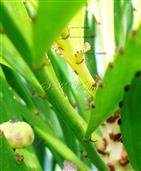
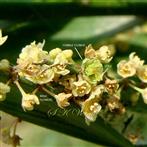
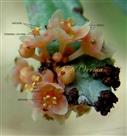
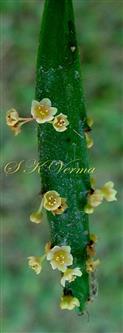

- 8992A.jpg)







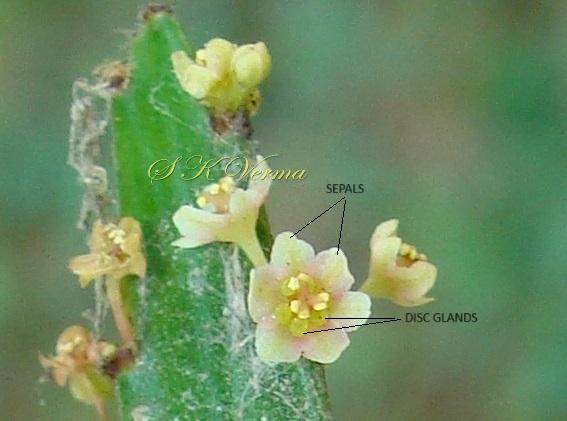
- 8992A.jpg)